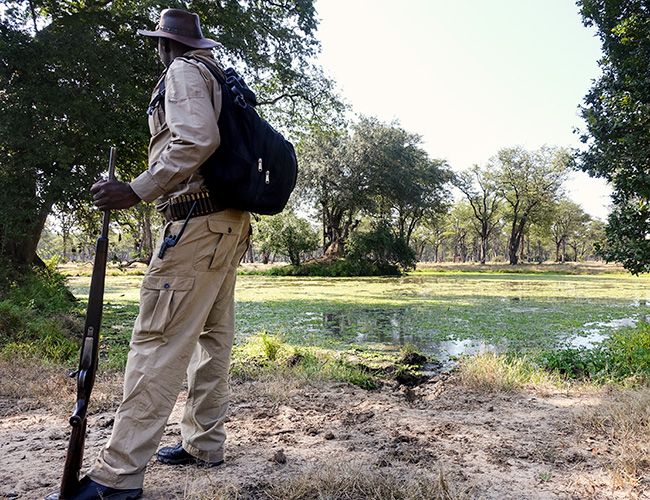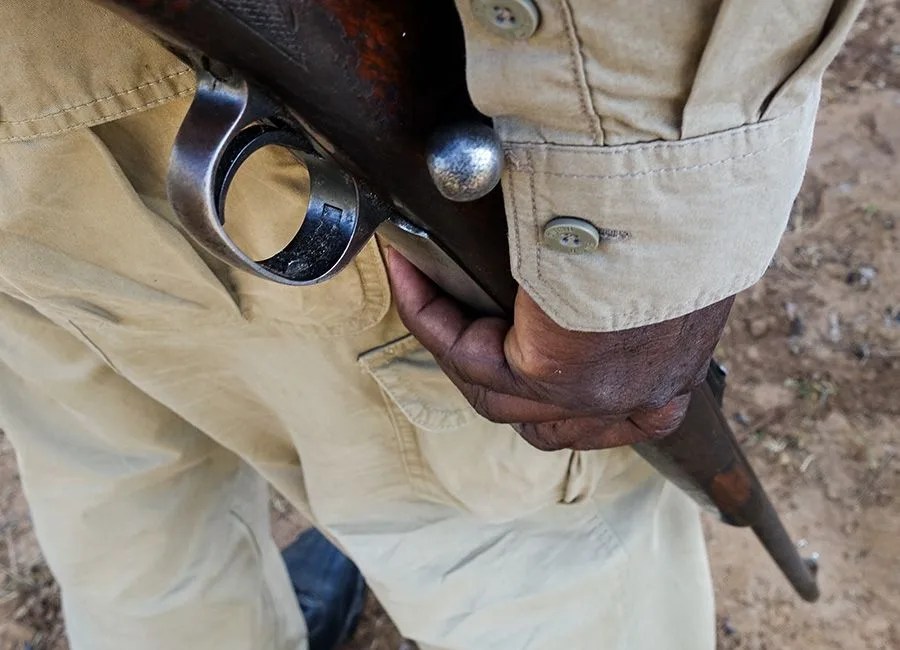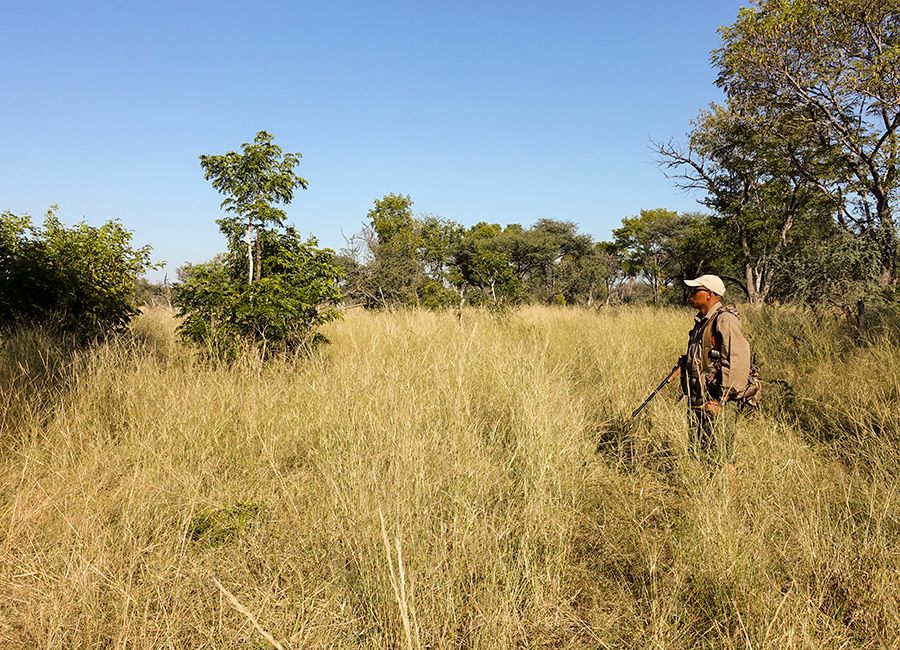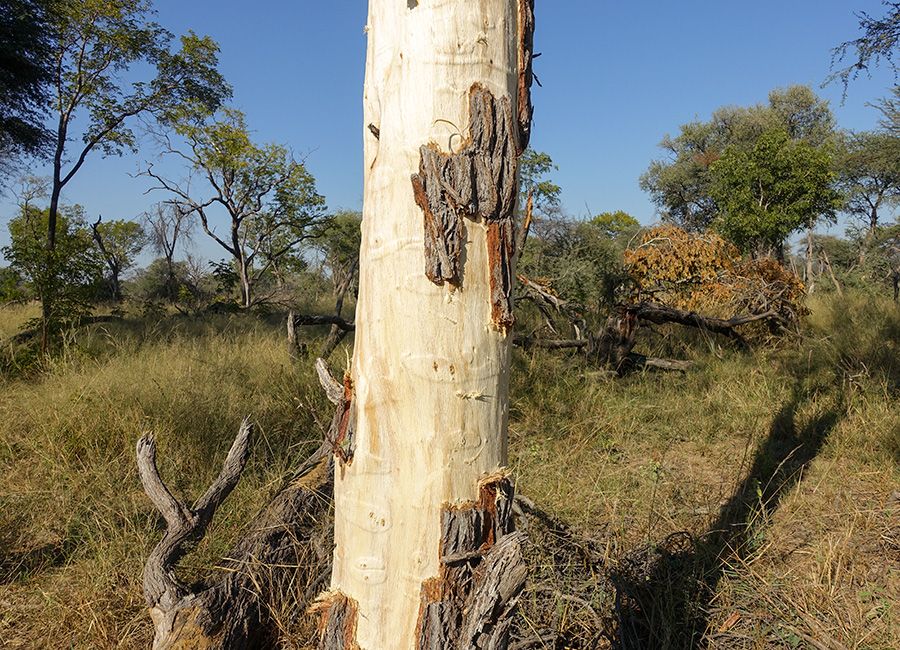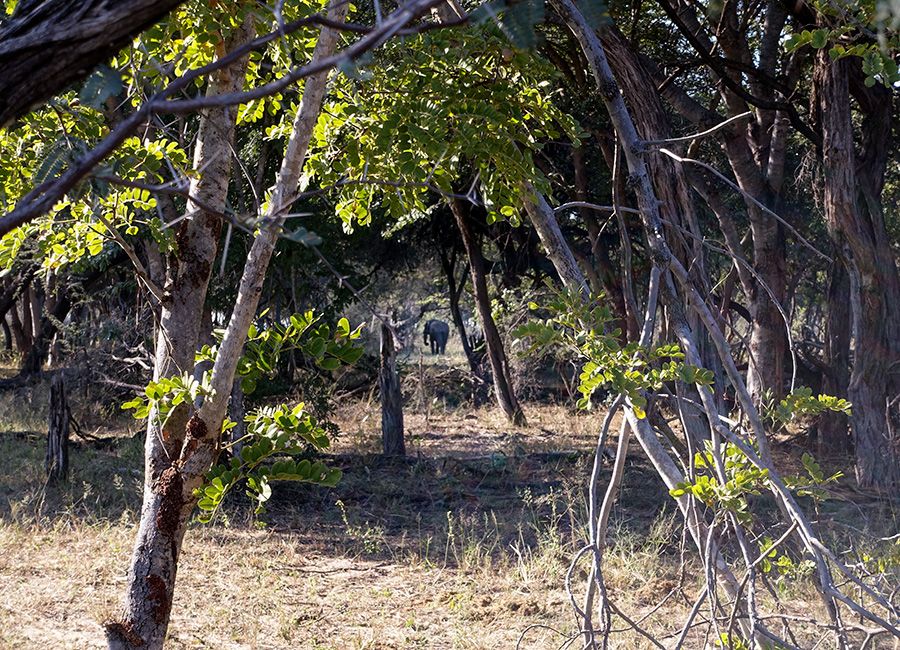8 photos
ROAD N✍TES
Editor’s Note: The safari today carries a tinge of the pedestrian. Will McGough found a way to reconnect with the African wilderness on foot in Zimbabwe’s largest national park.
We stop the van where the paw prints end and swing open the doors. The guide shoulders his rifle and jerks his head. I nod and take my place behind him, single file, staying close on his heels. The early morning light in Hwange National Park, Zimbabwe is classically golden, and the terrain under my boots is sandy, the aftermath of an epic sandstorm that brought it here from the Kalahari Desert more than 100 million years ago. When the wind comes through the trees, the guide is highly aware of it. He removes an old, travel-sized sunblock bottle from his pocket. He squeezes it, and a puff of ash comes out and waves with the wind, showing us its exact direction. We glance over our shoulders as we duck under a branch and enter the outskirts of the acacia grove.
For the first time, my feet are on the ground in the exposed African wilderness. I feel nervous. It goes against everything the traditional safari safety spiel has taught me: the idea of keeping my distance, of staying in the vehicle at all times so as not to be identified as human. There’s always been that fine line of separation, that comfort, however false, of sitting a few feet off the ground.
I hear an elephant trumpet in the distance and immediately turn and look at the guide for his reaction. Are we okay? Should we take off? He doesn’t flinch. Only food runs in the bush, he later tells me. Now he very calmly raises his two fingers to his eyes, then points through the trees. I follow the imaginary line from his finger and catch a glimpse of the elephants straight ahead through the thick brush, about 50 yards out. The herd drifts as it grazes, and soon it is once again camouflaged by the trees. They are amazingly difficult to see considering their enormous size, but we are safe downwind, our scent undetectable.
My head, and certainly my brain, is on a swivel. There’s this constant, nagging feeling of vulnerability, that a big cat might be lurking behind me in the grass.
We are deliberate in our movements, stepping over fallen trees and avoiding broken branches. The destruction is a direct result of Hwange’s booming elephant population, a statistical reality that is good news for tourists and bad news for environmentalists. In 2003, there were 19,000 elephants. Today, there are 45,000, and, as you might expect from such a large animal, their impact has been anything but subtle. As we approach the acacia grove, I see that there are just as many trees on the ground as there are standing. Elephants eat tree bark and use the trunks as scratch pads, but the most damage comes when feeding their young. Baby elephants are still too short to reach the nuts on the trees, so mature elephants break the branches to the ground for them to scavenge or ram them to knock off the nuts. The comparatively brittle trees have no chance, and the amount that have been damaged, crushed, peeled, or fallen resembles the carnage of a tornado.
